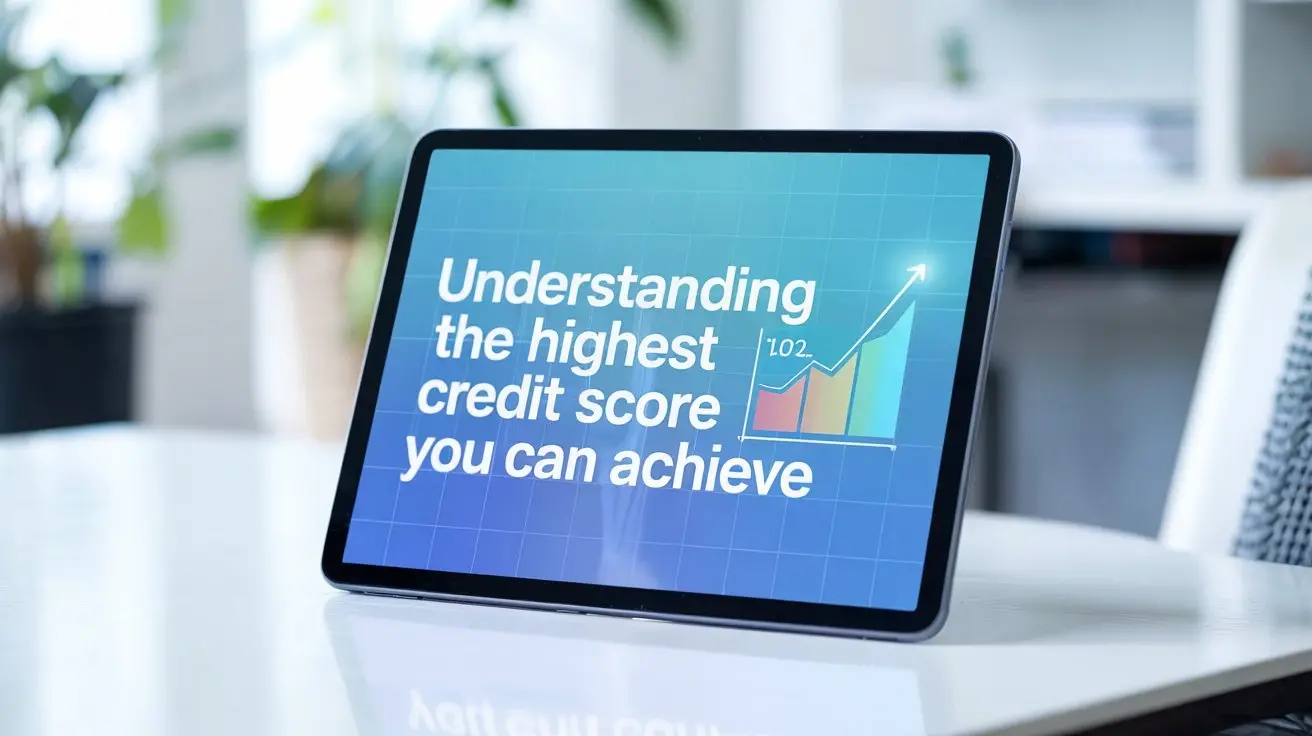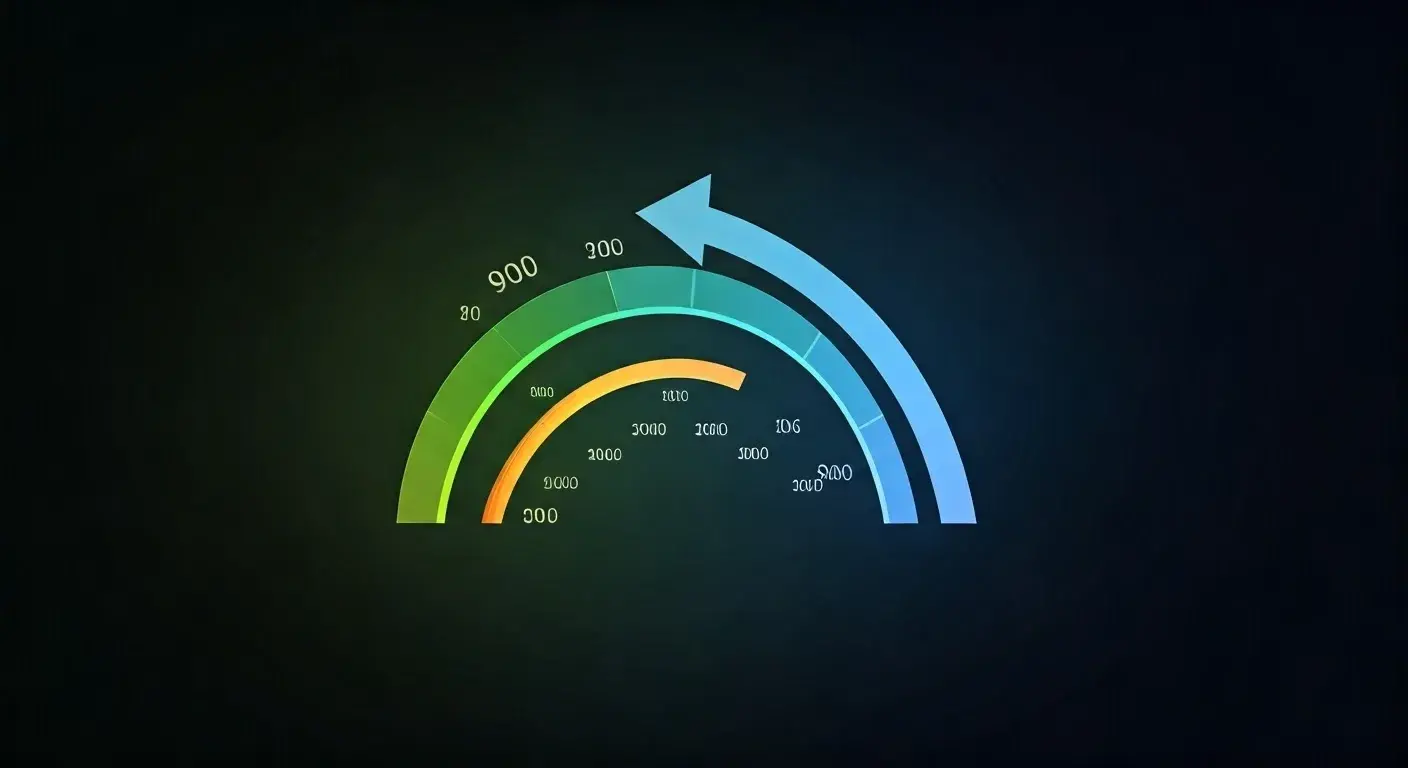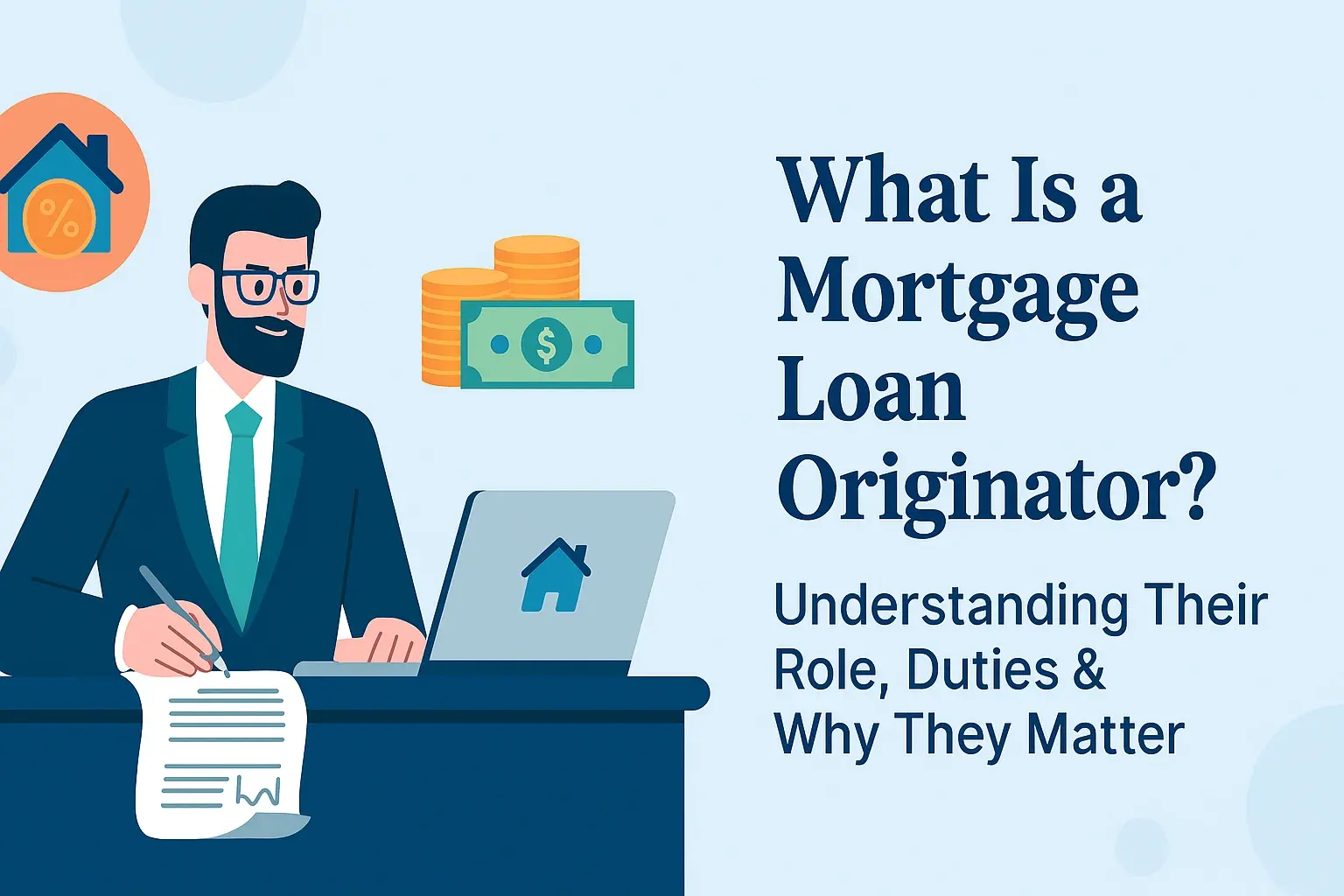-
Posted on: 10 Feb 2025

-
A 653 credit score isn't a roadblock to your financial aspirations; it's a stepping stone. This guide reveals how to leverage and improve your score to achieve significant financial goals in 2025, from homeownership to smart investing.
Understanding Your 653 Credit Score
A credit score is a three-digit number that lenders use to assess your creditworthiness. It's a snapshot of your financial behavior, reflecting how likely you are to repay borrowed money. Scores typically range from 300 to 850, with higher scores indicating lower risk for lenders. In 2025, a 653 credit score generally falls into the "fair" or "average" credit range. This means you're not considered a high-risk borrower, but you're also not in the prime category that typically secures the best loan terms and interest rates.
What Does a 653 Score Mean?
Lenders categorize credit scores to simplify risk assessment. While exact ranges can vary slightly between credit bureaus and lenders, a 653 score usually sits in the following tiers:
- Excellent: 780-850
- Very Good: 700-779
- Good: 670-699
- Fair: 620-669
- Poor: 300-619
Therefore, a 653 score positions you at the upper end of the "fair" range, bordering on "good." This is a crucial distinction. While it indicates you've managed credit responsibly to some extent, there's significant room for improvement to unlock more favorable financial opportunities.
Factors Influencing Your Credit Score
Understanding the components that make up your credit score is the first step to improving it. The five main factors, with their approximate weightings, are:
- Payment History (35%): This is the most critical factor. Late payments, missed payments, defaults, and bankruptcies significantly damage your score. Consistent on-time payments are paramount.
- Amounts Owed (30%): This refers to your credit utilization ratio – the amount of credit you're using compared to your total available credit. Keeping this ratio low (ideally below 30%) is vital.
- Length of Credit History (15%): The longer you've had credit accounts open and in good standing, the better. This shows lenders a track record of responsible behavior.
- Credit Mix (10%): Having a mix of credit types, such as credit cards, installment loans (like mortgages or auto loans), can positively impact your score. It demonstrates you can manage different forms of credit.
- New Credit (10%): Opening too many new accounts in a short period can lower your score, as it suggests you might be taking on too much debt. Each hard inquiry for new credit has a small, temporary impact.
For a 653 score, it's likely that some of these factors, particularly payment history or amounts owed, are preventing it from being higher. Identifying which areas are weakest is key to targeted improvement.
Credit Reports vs. Credit Scores
It's important to distinguish between your credit report and your credit score. Your credit report is a detailed history of your credit activity, compiled by the three major credit bureaus: Equifax, Experian, and TransUnion. Your credit score is a numerical representation derived from the information in your credit report. You can obtain a free copy of your credit report annually from each bureau at AnnualCreditReport.com. Reviewing your report is essential to identify any errors that might be negatively impacting your score.
The Real Impact of a 653 Score on Your Financial Goals
A 653 credit score can present challenges when pursuing significant financial goals. Lenders view this score as indicating a moderate level of risk, which translates into less favorable terms for loans and credit. Understanding these impacts is crucial for setting realistic expectations and developing effective strategies.
Mortgage Approval and Interest Rates
Securing a mortgage is a primary financial goal for many. With a 653 credit score, approval is possible, but often comes with higher interest rates. In 2025, mortgage lenders are scrutinizing applications closely. A score in the fair range means you're likely to be offered rates significantly higher than someone with a score of 740 or above. These higher rates can add tens of thousands of dollars to the total cost of your home over the life of the loan.
Example: Consider a $300,000 mortgage. A borrower with a 740+ score might secure a 6.5% interest rate, while someone with a 653 score might be offered 7.5%. Over 30 years, this 1% difference could mean paying approximately $70,000 more in interest.
Furthermore, lenders might require a larger down payment or charge additional fees for borrowers with lower scores to mitigate their perceived risk.
Auto Loans and Vehicle Financing
Purchasing a vehicle often requires an auto loan. Similar to mortgages, a 653 credit score will likely result in a higher Annual Percentage Rate (APR) on an auto loan. This means your monthly payments will be higher, and you'll pay more in interest over the loan term. For a new car loan of $30,000 over 60 months:
- 740+ Score: Might get an APR around 5.5% (Monthly Payment: ~$575, Total Interest: ~$4,500)
- 653 Score: Might get an APR around 8.5% (Monthly Payment: ~$630, Total Interest: ~$7,800)
The difference of over $3,000 in interest and $55 in monthly payments can be substantial. Some lenders might even require a co-signer or a larger down payment for a 653 score.
Personal Loans and Debt Consolidation
Personal loans can be useful for various purposes, including consolidating high-interest debt or covering unexpected expenses. While a 653 score might qualify you for some personal loans, the interest rates will be elevated. This can make debt consolidation less effective, as the new loan's interest might not be significantly lower than the debt you're trying to consolidate. It's essential to compare offers carefully and ensure the new loan's APR is substantially lower to make it worthwhile.
Credit Card Approval and Rewards
Obtaining new credit cards can be challenging with a 653 score. You might be limited to cards with lower credit limits, higher interest rates, and fewer rewards or benefits. Premium travel cards, cashback cards with generous rewards, and balance transfer offers with long 0% introductory periods are often reserved for those with good to excellent credit.
Securing a card with a 653 score might mean settling for a standard rewards card or even a secured credit card (which requires a cash deposit). While these can help build credit, they offer fewer perks than cards available to those with higher scores.
Insurance Premiums
In many states, insurance companies use credit-based insurance scores to determine premiums for auto and homeowners insurance. A lower credit score can lead to higher insurance costs. This is because statistical data suggests a correlation between credit behavior and the likelihood of filing claims. Even if you're not seeking credit, your 653 score could be indirectly impacting your budget through higher insurance premiums.
Rental Applications
Landlords often check credit reports as part of the tenant screening process. A 653 score might be viewed as a risk, potentially leading to rejection or requiring a larger security deposit or a co-signer. This can be a significant hurdle if finding a new place to live is a priority.
Strategies for Improving Your 653 Credit Score
The good news is that a 653 credit score is not static. With a focused approach, you can significantly improve it. The key is to address the factors that are most likely holding your score back. Here are actionable strategies for 2025:
1. Master Your Payment History
Since payment history is the most influential factor, making on-time payments is non-negotiable.
- Set Up Autopay: For all your credit accounts (credit cards, loans, utilities), set up automatic payments for at least the minimum amount due. This prevents accidental late payments.
- Payment Reminders: Supplement autopay with calendar reminders a few days before the due date.
- Catch Up on Past Due Accounts: If you have any accounts that are currently past due, prioritize bringing them current immediately. The longer a payment is late, the more damage it does.
- Address Collections: If you have accounts in collections, work with the collection agency to resolve them. Negotiating a "pay for delete" agreement (where they remove the collection from your report in exchange for payment) can be beneficial, though not always guaranteed.
2. Reduce Your Credit Utilization Ratio (CUR)
Your CUR is the amount of credit you're using divided by your total available credit. A high CUR signals to lenders that you might be overextended.
- Pay Down Balances: The most direct way to lower your CUR is to pay down your credit card balances. Focus on cards with the highest utilization first.
- Increase Credit Limits: If your payment history is good, you can request a credit limit increase from your current credit card issuers. This increases your total available credit, lowering your CUR even if your spending remains the same. Be cautious not to increase spending if you get a limit increase.
- Spread Out Spending: If possible, avoid maxing out any single credit card. Distribute your spending across multiple cards to keep individual utilization low.
- Pay Multiple Times a Month: Consider making payments before your statement closing date. This ensures a lower balance is reported to the credit bureaus.
Target: Aim to keep your overall CUR below 30%, and ideally below 10% for the best impact.
3. Lengthen Your Credit History
This factor takes time, but you can influence it by maintaining existing accounts and avoiding unnecessary closures.
- Keep Old Accounts Open: Even if you don't use an old credit card often, keeping it open (especially if it has no annual fee) helps your average age of accounts.
- Use Older Cards Periodically: Make a small purchase on an older card every few months and pay it off immediately to keep it active and prevent the issuer from closing it due to inactivity.
- Avoid Closing Accounts: Closing a credit card, especially an older one, reduces your total available credit and can shorten your average credit history length, both of which can negatively impact your score.
4. Diversify Your Credit Mix
While not as impactful as payment history or utilization, a healthy credit mix can contribute positively.
- Consider an Installment Loan: If you have only credit cards, consider taking out a small installment loan (like a credit-builder loan from a credit union) and paying it off diligently. This demonstrates your ability to manage different types of credit.
- Avoid Unnecessary New Accounts: Only open new credit accounts if you genuinely need them and can manage them responsibly.
5. Be Mindful of New Credit
Each time you apply for new credit, a hard inquiry is placed on your report, which can slightly lower your score temporarily.
- Limit Applications: Apply for new credit only when necessary.
- Shop Around Strategically: When looking for loans (mortgage, auto), try to do your shopping within a short timeframe (e.g., 14-45 days, depending on the scoring model). Credit scoring models often treat multiple inquiries for the same type of loan within this window as a single inquiry.
6. Monitor Your Credit Reports Regularly
Errors on your credit report can unfairly drag down your score.
- Get Free Reports: Obtain your free credit reports from Equifax, Experian, and TransUnion at AnnualCreditReport.com at least once a year.
- Dispute Errors: If you find any inaccuracies (e.g., accounts you don't recognize, incorrect late payment markers), dispute them immediately with the credit bureau and the creditor.
7. Consider Credit-Builder Tools
For those with limited credit history or looking to strengthen their profile, specific tools can help:
- Secured Credit Cards: These require a cash deposit that typically equals your credit limit. They function like regular credit cards and are reported to the credit bureaus.
- Credit-Builder Loans: Offered by some credit unions and community banks, these loans place the borrowed amount in an account that you can only access after you've paid off the loan. Your payments are reported to the credit bureaus.
- Rent and Utility Reporting Services: Services like Experian Boost or RentReporters allow you to add on-time rent and utility payments to your credit report, which can help improve your score.
Achieving Specific Financial Goals with a 653 Score
While a 653 credit score presents challenges, it doesn't mean your financial goals are out of reach. With strategic planning and focused effort on improving your score, you can achieve them. Here's how to approach common goals:
Goal 1: Buying a Home
Current Status: A 653 score might qualify you for FHA loans or conventional loans with higher interest rates and down payment requirements.
Action Plan:
- Improve Score to 670+: Aim to get your score into the "good" range. This could significantly lower your interest rate and potentially reduce down payment needs for conventional loans. Focus heavily on reducing credit utilization and ensuring perfect payment history.
- Save for a Larger Down Payment: A larger down payment (e.g., 10-20%) can offset a lower credit score in the eyes of some lenders, demonstrating more financial stability and reducing the loan amount.
- Research Loan Programs: Explore FHA loans (backed by the Federal Housing Administration), which have more lenient credit score requirements (often starting around 580 with a 3.5% down payment). Understand the associated mortgage insurance premiums (MIP). Also, look into USDA loans for rural properties, which may have no down payment requirement and flexible credit guidelines.
- Get Pre-Approved: Once you've made some progress, get pre-approved for a mortgage. This will give you a clear picture of what you can afford and what terms you qualify for.
- Work with a Mortgage Broker: A good broker can help you find lenders who are more flexible with credit scores and guide you through the application process.
2025 Outlook: The housing market in 2025 is expected to remain competitive. Improving your credit score will be crucial to securing favorable terms and avoiding being priced out by higher interest rates.
Goal 2: Buying a New Car
Current Status: A 653 score will likely result in subprime auto loan rates, meaning higher monthly payments and more interest paid.
Action Plan:
- Boost Score to 670-700: Even a modest increase can lead to better loan offers. Focus on reducing credit card balances and ensuring all payments are on time.
- Save for a Substantial Down Payment: A down payment of 20% or more can significantly reduce the loan amount and the lender's risk, potentially leading to better terms.
- Shop Around: Don't accept the first loan offer from the dealership. Get pre-approved from your bank, credit union, and online lenders before you go car shopping. Compare APRs, loan terms, and fees carefully.
- Consider Certified Pre-Owned (CPO): CPO vehicles often come with warranties and are typically less expensive than new cars, reducing the overall loan amount needed.
- Negotiate the Price: Focus on negotiating the purchase price of the car separately from the financing.
2025 Outlook: Auto loan rates are influenced by broader economic conditions. Improving your score is the most direct way to combat potentially rising interest rates in 2025.
Goal 3: Consolidating High-Interest Debt
Current Status: With a 653 score, you might qualify for a personal loan or balance transfer card, but the interest rates could be high, diminishing the benefit of consolidation.
Action Plan:
- Improve Score to 680+: Aim for a score in the "good" range. This will open up options for lower-APR personal loans and balance transfer cards with more attractive introductory offers.
- Focus on Balance Transfer Cards: Look for cards offering a 0% introductory APR for 12-21 months. Transfer your high-interest debt to this card. Ensure you have a plan to pay off the balance before the introductory period ends. Be aware of balance transfer fees (typically 3-5%).
- Consider a Debt Consolidation Loan: If a balance transfer card isn't feasible, research personal loans from credit unions or online lenders. Compare APRs and fees. The goal is to secure a loan with an APR significantly lower than your current average interest rate.
- Prioritize Paying Down Debt: Regardless of the method, aggressively pay down the consolidated debt. The faster you eliminate it, the less interest you'll pay overall.
- Budget and Track Spending: To prevent falling back into debt, create a strict budget and track your expenses diligently.
2025 Outlook: Interest rates for personal loans and credit cards are expected to remain elevated in 2025. Improving your credit score is key to accessing more affordable debt consolidation options.
Goal 4: Saving and Investing for Retirement
Current Status: While your credit score doesn't directly impact your ability to open retirement accounts (like IRAs or 401(k)s), it influences your overall financial capacity to save and invest. Higher interest rates on debt mean less money available for savings and investments.
Action Plan:
- Improve Credit Score: By reducing debt and lowering interest payments through a better credit score, you free up more disposable income. This extra cash can be directed towards retirement savings.
- Increase Savings Rate: Aim to contribute at least 15% of your income to retirement accounts. If you have an employer-sponsored 401(k), contribute enough to get the full employer match – it's free money!
- Open an IRA: If you don't have access to a 401(k) or want to supplement your savings, open a Roth or Traditional IRA.
- Invest Wisely: Choose low-cost index funds or ETFs within your retirement accounts. Diversify your investments to manage risk.
- Automate Contributions: Set up automatic transfers from your checking account to your IRA or ensure your 401(k) contributions are automatically deducted from your paycheck.
2025 Outlook: The stock market's performance in 2025 will be influenced by various economic factors. Consistent, long-term investing, regardless of market fluctuations, is the most reliable path to retirement security. Improving your credit score now will give you more financial flexibility to invest consistently.
Building Long-Term Financial Health
Achieving your financial goals with a 653 credit score is not just about hitting specific milestones; it's about building a sustainable foundation for long-term financial well-being. The strategies you employ to improve your score will also contribute to a healthier financial life overall.
The Power of Consistency
The most significant takeaway is that consistency is key. Making on-time payments every single month, keeping credit utilization low, and managing your debt responsibly are habits that pay dividends over time. A 653 score is a signal that these habits may need strengthening. By focusing on them, you're not just chasing a number; you're building discipline that will serve you well in all aspects of your financial life.
Creating a Sustainable Budget
Improving your credit score often goes hand-in-hand with better budgeting. Understanding where your money is going allows you to allocate funds effectively towards debt repayment, savings, and investments. In 2025, with potential economic uncertainties, a well-defined budget is more critical than ever. Tools and apps can help you track spending, identify areas for savings, and ensure you're meeting your financial obligations.
Emergency Fund: Your Financial Safety Net
A robust emergency fund is crucial for preventing credit score dips. Unexpected expenses – a car repair, a medical bill, or a job loss – can derail even the best financial plans. Without an emergency fund, you might be forced to rely on high-interest credit cards or loans, damaging your credit. Aim to save 3-6 months of living expenses in an easily accessible savings account. This fund acts as a buffer, protecting your credit score and your financial goals during difficult times.
Financial Literacy and Continuous Learning
The landscape of personal finance is always evolving. Staying informed about credit scoring models, interest rate trends, investment strategies, and economic forecasts is vital. Resources like reputable financial blogs, books, podcasts, and workshops can provide valuable insights. Investing in your financial literacy empowers you to make smarter decisions and adapt to changing circumstances. Understanding how credit works, the impact of interest, and the benefits of saving and investing are foundational to long-term success.
Setting Realistic Goals and Tracking Progress
Break down your larger financial aspirations into smaller, manageable steps. Celebrate milestones along the way to stay motivated. Regularly review your progress towards your credit score improvement and overall financial goals. This could involve monthly check-ins on your budget and credit utilization, and quarterly reviews of your credit report and investment performance. Adjust your strategies as needed based on your progress and any changes in your financial situation or the economic environment.
The Long-Term Payoff
By diligently working to improve your 653 credit score and adopting sound financial habits, you are not just unlocking immediate opportunities like better loan terms. You are building a foundation for a secure and prosperous future. The ability to access credit at favorable rates, save and invest effectively, and navigate financial challenges with confidence are the hallmarks of long-term financial health. A 653 score is a starting point, and with the right strategies, your financial future can be significantly brighter.
In conclusion, achieving financial goals with a 653 credit score in 2025 is entirely possible. It requires a proactive approach focused on understanding your credit report, implementing targeted strategies for improvement, and setting realistic expectations for major financial endeavors. By prioritizing on-time payments, reducing credit utilization, and demonstrating consistent financial responsibility, you can steadily climb the credit score ladder. This journey not only unlocks better loan terms for mortgages and auto loans but also enhances your overall financial stability and opens doors to greater wealth-building opportunities. Start today, and transform your 653 score into a powerful asset for your financial future.











